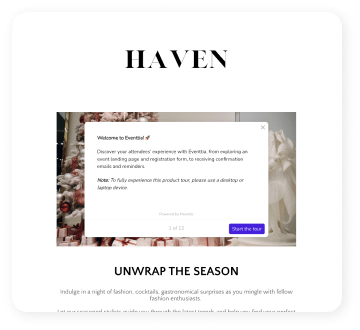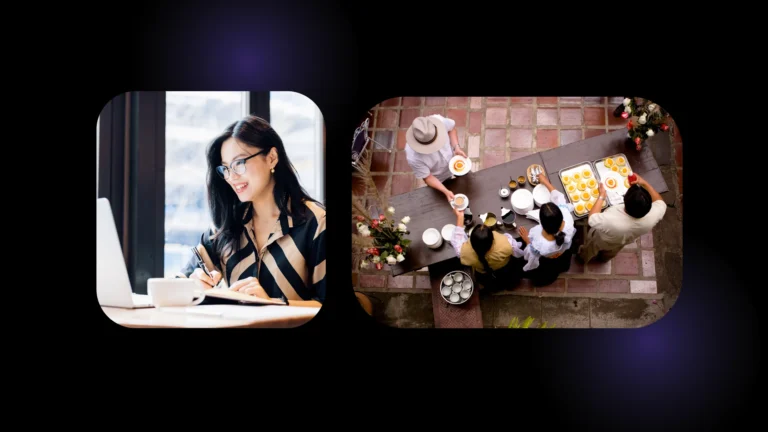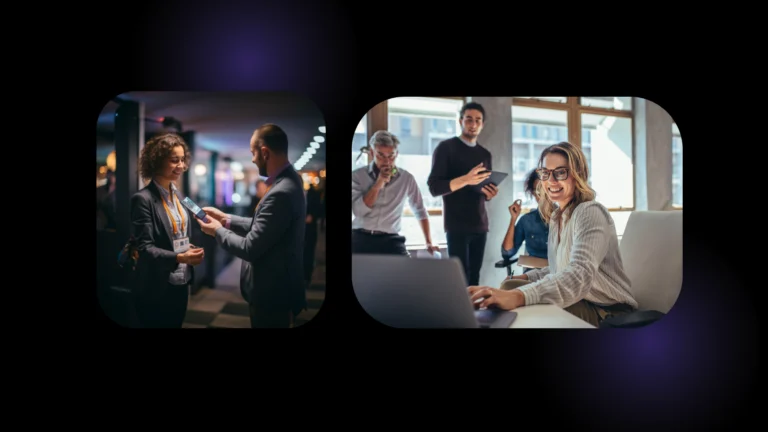A few months ago, we started to run a series of interviews with our clients. We decided to do that because we wanted to share their best practices for planning events and B2B meetings with the world.
And one question we ask every interviewee is how they envision the future of B2B matchmaking and B2B sessions. Although the answers vary, all of the people we interviewed see this dynamic as a crucial part of the event that is constantly evolving and gaining power.
A clear example is what Clara Ferrer, fair director at Colombian Chamber of Construction, highlighted when asked this question.
As she indicated, B2B meetings used to be part of trade shows. These networking sessions would help connect the offer and demand and make sure that the matchmaking element was based on what people are offering and seeking.
Over the years, however, professional started to carry out individual B2B meeting rounds. In other words, B2B matchmaking as a networking model has become an autonomous activity that can be run as both part and outside of an event.
This trend is thanks to the high demand for meaningful networking and people’s desire to strengthen the industries and move forward with different projects.
We at Eventtia also believe that these B2B meetings will only grow in popularity.
More and more people will want to attend the B2B matchmaking rounds, and more and more planners will incorporate this dynamic as part of the networking experience.
That’s why we’re continuing to explore the ways in which we can make the B2B matchmaking dynamic as user-friendly and stress-free as possible for both organizers and guests.
More attendees, more options, more confusion
To improve our B2B matchmaking tool, we decided to look closer at some of the problems that may arise during B2B meetings. One of them is the amount of attendees who register for these meetings.
Obviously, there’s absolutely nothing wrong with lots of people wanting to participate in B2B sessions at events.
However, there’s a big difference between managing 500 guests and 3,000 guests.
Here’s what I mean:
Let’s say you have 100 companies providing something and 400 buyers looking for a good offer. All these people register to attend the event. When they fill out the networking form, they specify what they’re offering or looking for, along with some other details related to their networking profile.
Subsequently, based on the information the attendees shared on that form, the system compiles a list of potential prospects or possible suppliers. In other words, the buyers can see who the providers are and vice versa, and both parties can use this list to request meetings with each other.
But this implies one more thing: To actually schedule a meeting with someone of interest, an attendee must scroll through the names of hundreds of guests that the algorithm generated as potential matching opportunities.
Yes, it might take some time to get to know your options, but it’s doable.
Now, imagine a different scenario.
Instead of 500 guests, you have 500 suppliers and 2,500 buyers.
What do you then?
Or better said, how in the world can an attendee scroll through the thousands of guests that the algorithm generated?
Apart from all the time this activity will take, more options lead to more confusion. Your attendees won’t be able to correctly evaluate the other guests and will have a smaller chance of finding someone of real value.
Introducing the AI-powered Recommendations option
What’s the solution?
How do you fight back and make the matchmaking component of B2B meetings more precise?
Over the last few months, we took an actionable approach toward the challenge and came up with a new networking feature that will help avoid the confusion and improve the accuracy when matching the offer and demand.
What we’re offering is an AI-powered algorithm that generates matching recommendations based on a set of attendee data points that simplifies the matching process.
Here’s how it works
People register to attend the event and fill out the registration and networking forms. Once the data from the forms is uploaded into the system, the algorithm will generate the familiar lists of suppliers and vendors, who can then request meetings between each other.
However, apart from the list of attendees, their networking profile, and their available time slots, there will be a different window showing the recommendations that the AI algorithm automatically created.
The secret here is that the most active participants will receive more recommendations, meaning they’ll have more meetings.

Let’s look at an example, using Annabel from Company X and John from Company Y.
Once the system generated a list of possible matches, Annabel started to request and accept several meetings with different demanders. In less than half a day, she managed to fill half of her schedule with B2B meetings.
John, however, didn’t show too much interest in scheduling meetings and only sent two requests.
Because Annabel pursued sending requests more vigorously, she managed to create an entire network around her name (multiple nodes).
The AI-powered algorithm identified the number of nodes she had and the number of second-degree connections she might have with other demanders. Thus, the system determined that Annabel was an active participant and her profile might be interesting to other people, meaning that she was recommended to other people.
A star appeared next to her name and she was visible in the Recommendations window.

John, on the other hand, was not recommended because he had less activity and therefore, fewer nodes. So the algorithm couldn’t identify people who might have found John interesting or were looking for similar profiles.
The higher the number of nodes, the greater the possibility that the attendee will appear on the Recommendations list.
This will decrease the complexity of the matchmaking while also increasing its accuracy, as well as empower those attendees who are more diligent and interested in building meaningful connections.
The future is here, and it looks bright
The popularity of B2B matchmaking events or dynamics is growing steadily. We’re noticing the rise of new challenges and complexities that we, as an event tech company, need to manage.
However, we’re excited about the future.
Although we’re living in a digital world, people are highly interested in face-to-face meetings and place great value on in-person experiences. That’s why we’re happy and honored to be a player in the events industry and not only share our vision about the future of meetings, but also build it in close collaboration with you.






